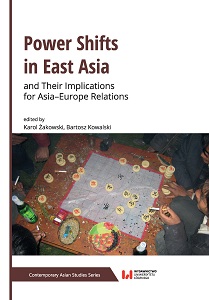Tensions Along the Western Pacific Rim of East Asia: Obstacles or Opportunities?
Tensions Along the Western Pacific Rim of East Asia: Obstacles or Opportunities?
Author(s): David A. Jones, Hanzhen Liu
Subject(s): Economic policy, Security and defense, Peace and Conflict Studies
Published by: Wydawnictwo Uniwersytetu Łódzkiego
Keywords: Asia; China; India; Japan; Pax Americana; Pax Americana Secunda; Pax Serica; CEEC; UNCLOS
Summary/Abstract: Tensions have erupted then lingered along the Western Pacific rim, widened across East Asia, expanded into South Asia. They range from the most threatening, the erratic and belligerent behavior of North Korea, to the mystifying posture of China across the East and South China Seas, to the transparent build-up of “flat top” warships by India and Japan, to a myriad of other indicators of conflict. Each of these problems is solvable, some more easily than others. Each requires cooperation among the nations along the Western Pacific, notably China, frequently absent. Each must involve the United States of America. These tensions, each individually and all collectively, may be viewed pessimistically as obstacles; they are better viewed optimistically as one grand opportunity. Emerging is an opportunity for the United States and China to join forces with their allies as partners leading the way toward global peace, a reinvigoration of what was known as the “Peace of 1945” or “Pax Americana” that can become at once a “Pax Serica” [“China Peace”] as well as what could become known as the “Pax Americana Secunda” [“Second American Peace”]. Allies in the region will have to join forces, they have little choice. This paper will address some internal Strengths and Weaknesses alongside some external Opportunities and Threats that befall each of the participants and all of them collectively. It will focus primarily on the opportunities that will burgeon if China and the United States can work together, as they began to do, seriatim, from the middle of 2017 before each country imposed tariffs on the other as a strategy.
Book: Power Shifts in East Asia and Their Implications for Asia–Europe Relations
- Page Range: 13-38
- Page Count: 26
- Publication Year: 2019
- Language: English
- Content File-PDF

